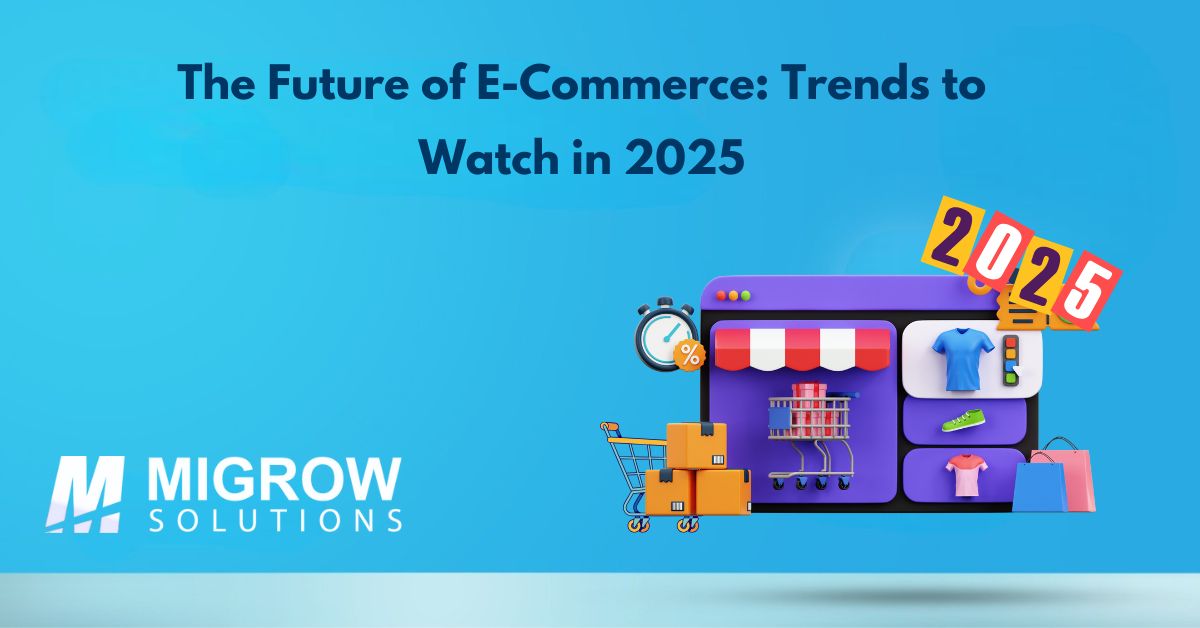
The Future of E-Commerce: Trends to Watch in 2025
Introduction
E-commerce is constantly evolving, with new technologies and consumer behaviors shaping its future. As we enter 2025, staying ahead of trends is crucial for businesses looking to thrive in the digital marketplace. Here’s a look at the top e-commerce trends set to define the future.
1. AI-Powered Personalization
AI is revolutionizing how businesses interact with customers. Personalized product recommendations, dynamic pricing, and chatbot support are becoming the norm. AI-powered tools allow businesses to analyze customer data and deliver tailored shopping experiences, boosting customer retention and sales.
2. Voice Commerce
With the rise of smart devices like Alexa and Google Home, voice commerce is gaining traction. Customers can now search, compare, and purchase products using voice commands. Businesses need to optimize their content for voice search to stay relevant in this growing trend.
3. Sustainability and Green Commerce
Eco-conscious consumers are demanding sustainable practices from e-commerce businesses. Offering eco-friendly products, recyclable packaging, and carbon-neutral shipping options can significantly enhance brand loyalty and attract environmentally conscious buyers.
4. Social Commerce Integration
Platforms like Instagram, Facebook, and TikTok are becoming virtual storefronts. Social commerce enables users to shop directly through social media, bridging the gap between inspiration and purchase. Businesses should leverage social media ads, shoppable posts, and influencer collaborations to boost sales.
5. Augmented Reality (AR) Shopping Experiences
AR is transforming the way customers shop online, allowing them to visualize products in real-world settings. From trying on clothes virtually to seeing how furniture fits in a room, AR enhances customer confidence and reduces return rates.
6. Mobile-First E-Commerce
With mobile devices accounting for a significant share of online traffic, optimizing for mobile-first experiences is essential. Fast-loading pages, seamless navigation, and mobile payment options like Apple Pay and Google Pay are key to capturing mobile shoppers.
7. Subscription-Based E-Commerce Models
Subscription services for products like beauty boxes, meal kits, and streaming services are seeing a surge in popularity. This model helps businesses maintain a steady revenue stream and build long-term customer relationships.
8. Blockchain for Secure Transactions
Blockchain technology is improving transparency and security in e-commerce transactions. It enables decentralized payment systems and ensures the authenticity of products, building trust with customers.
9. Hyperlocal Delivery Services
Customers are looking for faster and more reliable delivery options. Hyperlocal delivery, powered by drones, robots, or local partnerships, is becoming a key differentiator for e-commerce brands.
10. Omnichannel Experiences
Seamless integration between online and offline channels is crucial. Businesses should focus on providing a unified shopping experience across websites, mobile apps, and physical stores to meet customer expectations.
Conclusion
The e-commerce landscape in 2025 promises exciting opportunities for growth and innovation. By embracing these trends, businesses can stay competitive, meet customer expectations, and drive success in the ever-changing digital marketplace.


